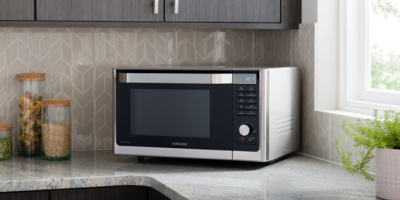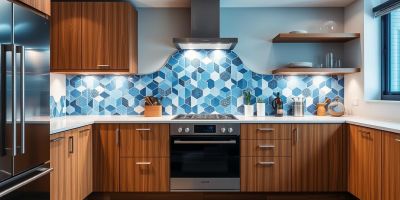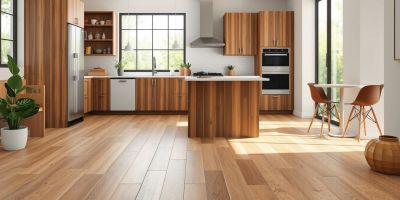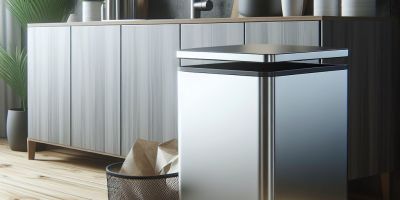2025-06-10 19:26:12 |
In the world of kitchen renovation, kitchen islands are key to modern kitchens. They offer more than just extra space; they add style and make your kitchen a social spot. A well-designed kitchen island can turn a small space into a place of both beauty and efficiency.
More and more homeowners want to add these versatile pieces to their kitchens. They bring benefits like more worktop space, storage, and even places to eat. Imagine having a luxury island with a waterfall edge or a cosy mix of marble and wood. Each design has its own perks and boosts daily use.
Adding seating and keeping a 1-metre walkway ensures your island is both stylish and practical. With features like built-in charging drawers and boiling water taps, your island becomes the heart of convenience and elegance.
Key Takeaways
- Kitchen islands are great for increasing worktop space and storage capacity.
- Options for incorporating seating include both dining seat height and bar stool height.
- Waterfall edges create a sleek, luxurious, and practical design.
- Ensuring a 1-metre walkway around the island is crucial for functionality.
- Technological features like boiling water taps and built-in charging drawers add convenience.
White Quartzite Kitchen Island: A Luxurious Centrepiece
A white quartzite kitchen island is both stylish and tough. It's perfect for any modern kitchen. Quartzite is loved for its natural beauty and usefulness. It's a top pick for 2024.
Translucent Elegance
Cristallo quartzite lets natural light shine through, giving your kitchen a magical feel. This is seen in places like the Manhattan apartment by Kelly Behun and Studio Sofield. The island is a key feature, blending style with function.
This island combines minimalism with luxury. It looks great and is practical too.
luxurious kitchen island
A luxurious kitchen island featuring a stunning white quartzite surface, elegantly designed with sleek lines and modern finishes, surrounded by high-end stainless steel appliances, soft ambient lighting, and stylish bar stools, set in a contemporary kitchen with warm wooden cabinetry and polished marble floors.
Sunlit Radiance
Placing a white quartzite island to catch sunlight makes it glow. This adds to the kitchen's bright, open feel. It matches well with other kitchen items, creating a smooth look.
This island is not just pretty. It's also heat, scratch, and etch resistant. This makes it a great choice for active homes.
Quartzite comes in many colours, like classic white or vibrant Fusion Wow. Keeping it clean with regular sealing and avoiding harsh cleaners keeps it looking new. A quartzite island boosts your kitchen's style and your home's value.

Cosy Marble and Wood Kitchen Island for Warmth
Using marble and wood together in your kitchen island makes it warm and welcoming. It's perfect for smaller kitchens. Celeste Robbins, an architect, shows how timber and Emperador marble work well together. They add warmth and style to the kitchen.
Combining Timber and Marble
Putting natural timber and marble on a kitchen island looks great and is useful. The marble kitchen island has a shiny surface ideal for preparing meals. The wood adds a rustic feel.
- Product weight: 105.00kg
- Height: 90cm, Width: 136cm, Depth: 61cm
- Fully assembled
- 15-year structural guarantee
- Delivery cost starts from £29
- Standard delivery within UK mainland: within 10 working days
- No quibble returns on all orders
- Average customer rating of 5.0 out of 5.0 based on 1 review.
Creating a Cozy Atmosphere
Combining timber and marble in a kitchen island creates a cosy spot for family and friends. This design is popular, with 70% of kitchen islands aiming to make welcoming spaces. The island can have a breakfast bar and lots of kitchen storage. It's both practical and stylish.
Creative Colour Choices: Celery-Green Kitchen Island
A celery-green kitchen island can brighten and add character to your kitchen. Designer Lauren Geremia picked Farrow amp; Ball's Pale Hound for the island. She paired it with a marble top that matches the checkerboard marble flooring. This mix brings a pop of colour and keeps the look sophisticated.
Brightening Up Your Space
Adding a green kitchen island lets you try out different green shades for various looks. Farrow amp; Ball Pale Hound is great for adding colour without losing sophistication. A colourful kitchen island can make your kitchen feel welcoming.
Sage green goes well with brass hardware, and light green with a simple backsplash creates a fresh look.
Perfect Pairings with Marble
Pairing a celery-green kitchen island with marble can make your kitchen stylish and useful. Marble countertops and green hues create a beautiful contrast. You can choose from bright mint to deep forest green to match your decor, whether it's traditional or modern.
Choosing a green kitchen island with marble makes your kitchen a standout feature. It's both functional and visually appealing.
Unique Tiles: A Vibrant Kitchen Island Solution
Unique tiles can turn a kitchen island into a standout feature. In San Antonio, architect Vicki Yuan used Erin Adams' hexagonal tiles. This choice linked the indoor kitchen to the outdoor pool area, creating a smooth flow.
Adding unique tiles refreshes a kitchen's look and gives it a unique feel. By picking tiles with bold patterns and colours, homeowners can make an old kitchen feel new and welcoming. A vibrant kitchen island becomes both a place to work and a piece of art.
When planning a kitchen island, think about what you need it for. It should take up no more than 10% of the kitchen's space. Islands usually range from 24 to 36 inches deep and 36 inches tall. For seating, aim for a height of 42 inches with a 12 to 18 inch overhang for comfort.
Unique tiles, like those from Erin Adams, can make a kitchen island a real showstopper. Islands can also be practical, housing sinks, dishwashers, and more. This makes them great for preparing meals and cleaning up.

Budget-Friendly Repurposed Kitchen Island
For those looking to save money on kitchen makeovers, a repurposed kitchen island is a great idea. It brings a vintage kitchen feel into your home. By turning an old carpenter's table into an island, you add charm and personality to your kitchen.
Reusing Vintage Furniture
Using vintage furniture again is a smart way to get a unique look without spending a lot. Chef Elena Reygadas shows this well in her Mexico City apartment. She took an old workbench and added a modern stone top, mixing old charm with new style.
This not only saves money but also helps the environment by giving old furniture a new life. You can use old sideboards, metal tables, or butcher blocks to make your kitchen island stand out. These pieces add history and unique character to your kitchen.
Adding Character with Upcycled Materials
Adding upcycled materials to your kitchen makes it more interesting and unique. Use reclaimed wood for countertops or vintage tiles for a bold look. Adding open shelving or old cabinets can also make your kitchen feel more personal.
Also, new hardware like sleek handles or feet can improve your island's look. This way, your kitchen island will have a special design that's also budget-friendly.
Creating a repurposed kitchen island is a great way to get a unique and high-end look. It uses upcycled materials and vintage pieces, offering a sustainable and stylish option for modern kitchens.
Introducing L-Shaped Kitchen Island Designs
L-shaped kitchens have a layout that forms the letter 'L' along two walls. They are great for small kitchens because they offer lots of storage and space for cooking. The design also keeps the kitchen feeling open and makes it easy to move around.
The 'kitchen work triangle' is a key part of this layout. It connects the cooker, sink, and fridge for efficient cooking and cleaning.
Maximising Seating Capacity
Adding an L-shaped kitchen island can greatly increase seating for guests. It's perfect for both big and small kitchens, fitting into traditional, modern, or minimalist styles. This design is great for adding breakfast bars or peninsulas, giving more space for eating and working.
Enhanced Functionality
A kitchen island in a larger L-shaped kitchen can be a key spot for eating and socialising. It also adds more worktop and storage space. With lots of storage units along the L-shape, you can use tall cabinets and larders to make the most of vertical space.
Open shelving and glazed units add more storage and make the kitchen look better. This way, you can keep things tidy and stylish.
Waterfall Edge for a Touch of Luxury
Adding a waterfall edge kitchen island is a top choice for those wanting luxury in their kitchens. This design trend boosts the look of a modern kitchen island and has practical perks. The smooth flow of stone from countertop to floor creates a sleek, unified look, making it a key feature in modern kitchens.
Choosing the Right Stone
It's key to pick the right stone countertop for a stunning waterfall edge. Greek Volakas marble is in style, fitting well in high-end designs like Brooklyn brownstone or SoHo lofts. For a modern island, veined marbles or sleek quartz are great picks. They look striking and are durable, perfect for a busy kitchen.
Creating a Continuous Flow
A well-thought-out waterfall edge kitchen island ensures a smooth flow from countertop to floor. This look is cohesive and seamless, ideal for various uses. In Ken Fulk's San Francisco kitchen, the waterfall edge enhances both grandeur and function.
It pairs well with light oak cabinets or contrasts dark-tone ones, like a beige marble island. The result is always elegant yet practical.
The waterfall edge is more than a luxury feature; it protects cabinets, hides appliances, and is budget-friendly for kitchen peninsulas. Its popularity keeps growing, making it a top pick for modern kitchens.

Lighting Up Your Kitchen Island with Statement Fixtures
Lighting is key in making a kitchen look good and work well. The island is a special spot that needs the right lighting. It not only lights up the area but also adds to the kitchen's style. With options like LED strips or pendant lamps, the right lighting can make the kitchen island a welcoming and stylish spot.
Practical and Stylish Choices
Choosing the right kitchen island lighting means finding a mix of style and function. Pendant lights are a top choice, offering designs from simple to bold. For a modern touch, consider lights that move up and down with a pulley system.
Materials like metal, glass, and ceramic are great for lighting because they're easy to clean. They also look good, especially with lights that add a soft glow. You can find unique lights like LED profiles or kitchen lamps that make your island stand out.
Enhancing Your Kitchen's Ambiance
Good lighting can really change how your kitchen feels. Big lights or several pendants work well in large kitchens, keeping the style. Make sure pendant lights are at the right height and spaced evenly for balanced lighting.
Glass shades let lots of light through, perfect for main kitchen lighting. LED strips provide a soft glow, great for the island. Dimmer switches let you adjust the light for different times and tasks.
A well-thought-out kitchen combines statement lights with practical kitchen design. This mix improves the kitchen's use and adds a warm, inviting feel. By picking and placing your kitchen island lighting carefully, you'll create a spot that looks great and works well.
Conclusion
Kitchen islands are now a key part of modern homes, combining style with practicality. They come in various materials like white quartzite, marble, and wood. These units make the cooking area better in many ways.
They help with extra storage and increase countertop space. Kitchen islands are more than just a place to cook. They can be used for dining, as a bar, or as a large work area. This makes your kitchen look better and work more efficiently.
Adding unique tiles, bright colours, and L-shaped designs lets you personalise your island. You can choose from budget-friendly vintage pieces or custom-made ones. This means there's a kitchen island for every taste and budget.
Getting a kitchen island is a smart move. It gives you more storage, a bigger work area, and a unified, stylish look. You can pick from materials like wood, marble, or stainless steel. This lets you design a kitchen that meets your needs.
Whether you want a fancy island or a practical one, it can change your kitchen. Your kitchen island can be the highlight of your kitchen, making cooking a joy.
FAQ
What are some stylish kitchen island designs for a home renovation?
Many designs can make a kitchen look great. You could use luxurious materials like Cristallo quartzite. Or mix marble and wood for a warm feel. For a budget-friendly option, try unique tiling and vintage furniture.
How can a white quartzite kitchen island serve as a luxurious centrepiece?
A white quartzite kitchen island, like one made with Cristallo quartzite, adds luxury and elegance. Its translucent quality brightens the space, making it a beautiful and functional focal point.
What benefits does a marble and wood kitchen island offer?
Marble and wood together create a warm, cosy kitchen island. It looks great and helps with storage, especially in small kitchens. This mix is both stylish and practical.
How can a celery-green kitchen island brighten up a space?
A celery-green island brings a lively feel to the kitchen. Pair it with a marble countertop for sophistication. This combo keeps the space balanced and bright.
What makes unique tiles a good option for a vibrant kitchen island?
Unique tiles, like Erin Adams' hexagons, make a kitchen island stand out. They link indoor and outdoor areas, adding personality and continuity to the space.
How can repurposing vintage furniture be a cost-effective kitchen island option?
Using vintage furniture, like a carpenter's table, adds a unique touch. Upcycling with modern touches, as Elena Reygadas did, is stylish and eco-friendly.
What are the advantages of an L-shaped kitchen island?
An L-shaped island boosts seating and workflow. It adds more counter space and helps with storage. This design is both practical and social.
How does a waterfall edge contribute to the luxury of a kitchen island?
A waterfall edge makes a kitchen island look luxurious and seamless. It's also practical, making cleaning easier and protecting cabinet sides.
What lighting options can enhance a kitchen island's ambiance?
LED strips or pendant lamps can brighten a kitchen island. These lights not only light up the space but also add to the decor, enhancing the kitchen's look.


















































